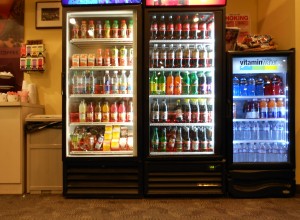I ran a few errands early and wanted to go out late, leaving a big window of time. I stopped by The Cinema Theatre (957 South Clinton Ave.) to see what was playing: The Big Year, and Real Steel. I had very low expectations about both films, but once in a while I like to make sure my off-the-cuff assessments agree with reality. I see a lot of intellectual movies, and seek out movies for cinephiles; I'll watch an otherwise boring movie if it has one exceptional element — great cinematography or something. But seldom do I go out for some mainstream popular film.
(957 South Clinton Ave.) to see what was playing: The Big Year, and Real Steel. I had very low expectations about both films, but once in a while I like to make sure my off-the-cuff assessments agree with reality. I see a lot of intellectual movies, and seek out movies for cinephiles; I'll watch an otherwise boring movie if it has one exceptional element — great cinematography or something. But seldom do I go out for some mainstream popular film.
The Big Year stars Jack Black, Owen Wilson, and Steve Martin. Each are trying for a "big year" — quoting the Wikipedia article, "an informal competition among birders to see who can see or hear the largest number of species of birds within a single calendar year and within a specific geographical area." The movie gets off to a poor start in my book with Black as Brad, a nuclear power-plant computer operator who provides expository voiceover to explain the movie. then we're introduced to Wilson as Bostick, the "reigning champion", and finally Martin as Stu who is trying to retire as CEO of a big company.
After the formulaic character introductions are established, the movie gets rolling to various attractive locales with a modestly good songs to go with it. Naturally each has a love interest. Stu gets the most realistically loving wife in JoBeth Williams. Bostick is also married, his wife played by Rosamund Pike who he treats like crap but she's too dumb to be anything but loyal for the sake of the story. Brad finds a love interest in Ellie played by Rashida Jones. (I found her super cute and could easily develop a fanboy crush.) The film blunders along with the species-count challenge fueling its underpowered engine until it finishes with a tidy, heartwarming ending. The movie was sufficiently weak that I found a highlight in a brief few scenes with Jim Parsons who plays Sheldon on The Big Bang Theory.
In all it's not atrocious as films go. I think it could be saved for a film nut like me by skipping the first 25 minutes or so: skip all the character introductions and exposition and jump right into the contest. It quickly becomes clear who's who and what's what, and I think it would make a better movie to figure it all out along the way.
Next was Real Steel which had pretty cool and seamlessly-integrated special effects. The setting is a few decades in the future where remote-controlled boxing robots are all the rage. Hugh Jackman plays Charlie who likes to throw away money he doesn't have on junky fighting robots, only to have them thoroughly destroyed. He blankly reacts to the death of his ex-girlfriend as a vehicle to introduce his 11-year-old son Max (Dakota Goyo). A wealthy aunt and uncle are ready to adopt Max, but naturally Charlie gets to take him for a while and brings the kid into the world of robot boxing. It's a Disney kids movie so its plot is absent of surprises for adults as everything that is about to happen it tweeted half an hour in advance.
I find it surprising that people continue to flock to Disney movies like this. Charlie is a terrible guy, and a worse father. He's a drunk, introduced in his cargo truck stumbling over beer bottles (although for the sake of the kids movie he never acts drunk, drinks much, nor does anybody smoke). He steals money from a guy who is later tagged a "bad guy" for tracking him down and beating him a bit to get it back. He drags the kid through all kinds of life-threatening danger. He extorts the aunt and uncle for money by pretending to want to adopt Max in court. And he's abusive to his love-interest Bailey (Evangeline Lilly) — who naturally stays loyal (pay attention, girls, Disney is speaking to you!)
The best I can say about the movie is, "it's kind of cool looking". The computer graphics animation is always completely seamless, giving the illusion of these big robots being present. But that's pretty much it.
I'm trying to remember anything from Real Steel that made me want to care about the movie or any of the characters. The Big Year at least had a few sweet moments in it, and it's probably redeemable by skipping a bit. I may contemplate an alternative home-movie screening where I pick movies that may be salvageable in that manner — perhaps a shortened double-feature night … hmm …

